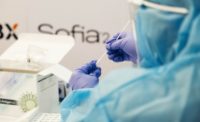Opportunities rise with North America leading in sterile medical packaging

The opportunity in the global sterile medical packaging market is estimated to be worth US$26.5 bn by the end of 2016 and is projected to reach U.S. $38.3 bn by 2024, according to Transparency Market Research (transparencymarketresearch.com)
Some of the key strategies employed by players in the sterile medical packaging market are mergers and acquisitions, strengthening the distribution network, product expansion and expanding into other geographical segments.
North America to Continue its Lead in Global Sterile Medical Packaging Market
The vials and ampoules segment is estimated to account for the leading share in the sterile medical packaging market in terms of value by 2016-end. “However, this product segment is expected to register a marginal decrease in market share by the end of the forecast period, with the pouches and bags segment likely to emerge as the dominant segment by 2024,” lead analyst predicts. Nevertheless, the vials and ampoules segment will be one of the most attractive markets during the course of the forecast period.
Plastics are expected to be the preferred material choice for vendors in the sterile medical packaging market. By application, the pharmaceuticals and biologics segment is estimated to account for 64% of the market by 2016-end. This is attributed to the growing demand for biologics across various therapeutic applications. Geographically, North America is expected to continue leading the sterile medical packaging market through 2024, accounting for over 36% by 2016-end. Latin America is projected to register a 6.7% CAGR from 2016 to 2024, emerging as one of the most lucrative markets for sterile medical packaging.
Surging Incidence of Chronic Diseases Driving Demand for Sterile Medical Packaging
Biologics has gained popularity in the recent past and has become the preferred choice for the treatment of chronic disorders such as diabetes and arthritis. However, the lead analyst at TMR finds that the manufacturing process is rather complex and requires a high degree of stability. “An increased level of expertise is needed to maintain and preserve biologics and this has led to the rising demand for innovative product packaging solutions among biologics manufacturers,” say lead analysts.
The growing incidence of chronic diseases worldwide has emerged as a major concern among the global population. This rise is, in turn, driving the demand for medical drugs and devices, which creates a favorable environment for sterile medical packaging.
Although the transportation of drugs and devices packed in bags and pouches requires extreme care and specific requirements, this restraint has driven manufacturers to develop flexible and sustainable packaging to overcome the shortcomings of sterile medical packaging solutions.
Looking for a reprint of this article?
From high-res PDFs to custom plaques, order your copy today!





